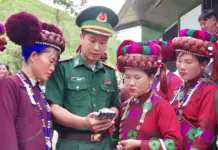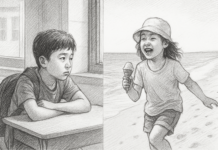-
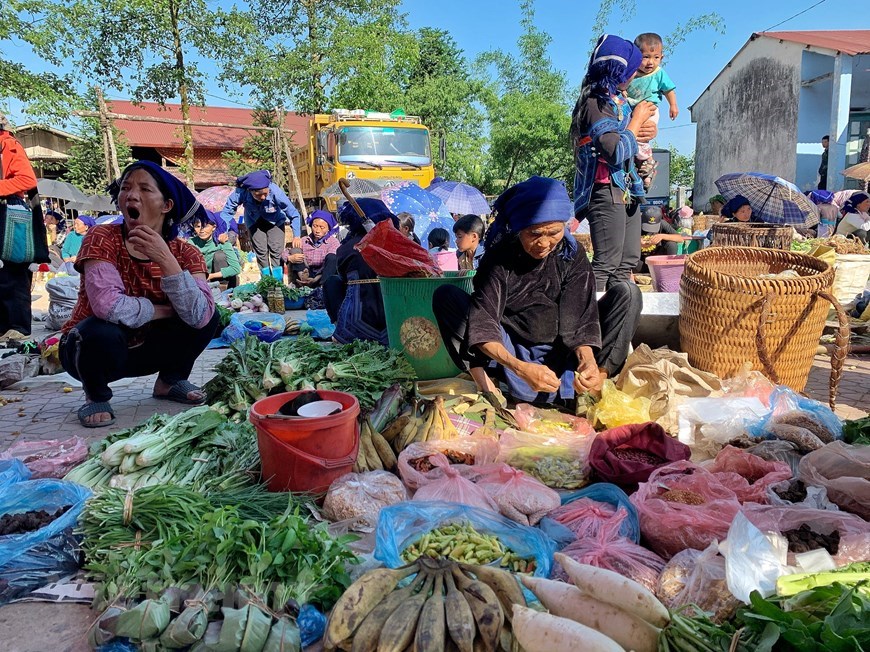
These photos were taken at the weekend market of Ha Nhi ethnic minority people in Y Ty commune of Bat Xat district, the northern mountainous province of Lao Cai, before April 27, when the fourth wave of COVID-19 infections began in the country. Y Ty, about 70 kilometres to the north of renowned resort town Sa Pa, is rather isolated due to high surrounding mountains. It has become an appealing destination for Vietnamese and international tourists thanks to its beautiful paddy fields and traditional forest-worship rituals. The commune, which is 2,000 metres above sea level, is home to H’mong, Dao, Giay and Ha Nhi ethnic minority groups. (Photo: VietnamPlus)
-

Local residents bring their home-grown farm produce such as vegetables and fruits to sell at the market every weekend. Here in Y Ty, this commune is covered by clouds clinging to the side of mountains in winter, looking like a heaven of fairies. The white colour is replaced by the pink of Do Quyen (rhododendron) flower in full bloom in spring. As summer comes, the grey paddy fields seem to be covered in a new cloth by the skillful and industrious hands of local residents. In September and October, when Y Ty is most beautiful, the rice paddies turn yellow dotted with houses with wooden roofs. (Photo: VietnamPlus)
-
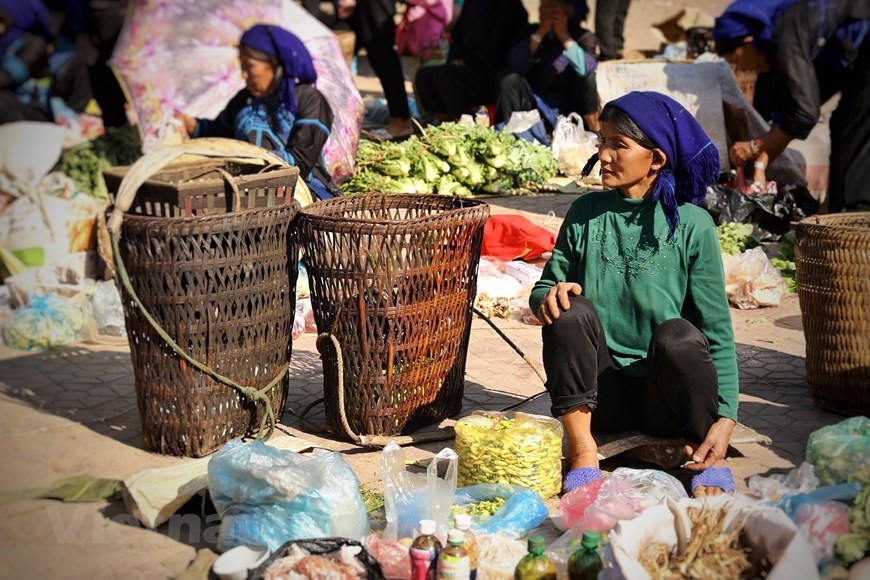
Most of mountainous districts in Lao Cai province have their market days, mostly on every Saturday and Sunday. Each market has its own special identities. The market in Y Ty is not as colourful as the renowned Bac Ha market in Bac Ha district, but it is unique thanks to its location amidst a sea of clouds. Another identity of Ha Nhi people as well as Y Ty commune is ‘trinh tuong’ (rammed earth) houses. Seeing humble these rammed earth houses by the side of terraced fields is like seeing a well-arranged picture. That is the reason why many people wish to come to this area, dubbed ‘the land of clouds.’ (Photo: VietnamPlus)
-

Coming to the weekend market of Y Ty commune, visitors will have a chance to explore the unique culture of local Ha Nhi people. Ha Nhi is one of the 54 ethnic groups in Vietnam. According to the 2009 population census, the Ha Nhi ethnic group has a population of about 22,000 in the country. Most of this minority’s population live in Lao Cai, Lai Chau and Dien Bien, three mountainous border provinces in the north of the country. The Ha Nhi people have always been known to be diligent. Apart from growing wet rice on terraced fields for self-sufficiency they also grow cotton and weave fabric to make traditional costumes of their ethnic group. (Photo: VietnamPlus)
-
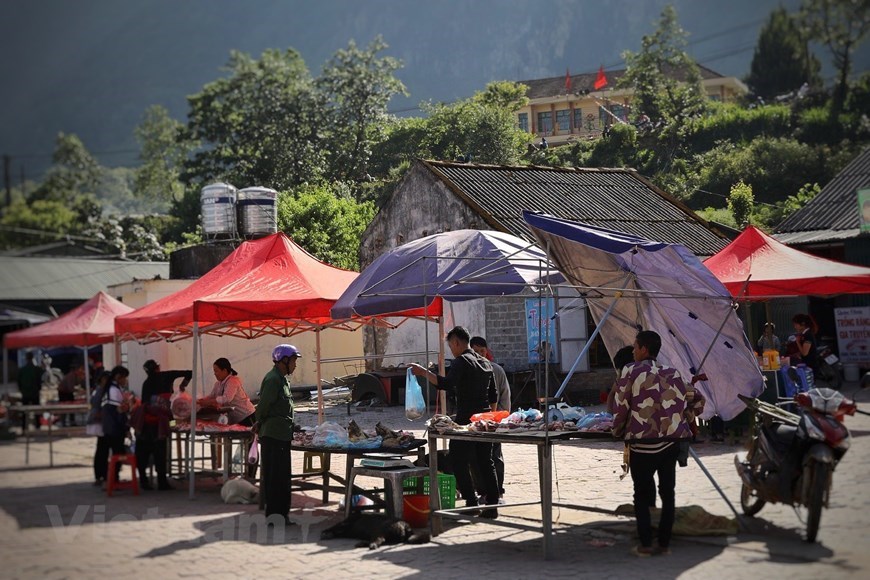
Stalls selling meat of free-range black pigs, one of the must-try delicacies for every visitor once setting foot here. To have the best view of Y Ty’s cloud-covered region, it is recommended to travel between September and the following April during the dry season, with a possibility of snowing. In early April, tourists will also be welcomed by blooming rhododendron trees, covering the region with a pink-violet shade. In May and June when summer rains begin, water flows to the fields, softening dry soil to allow local residents to begin planting rice. The brown soil, sparkling water, sun rays and green rice seedlings all create a wondrous picture for tourists. From late August to October, visitors can experience the blooming golden terraced paddy fields. (Photo: VietnamPlus)
-

‘Ha Nhi den’ (Black Ha Nhi) is a branch of the Ha Nhi ethnic group, one of the least populous ethnic groups in Vietnam. The Ha Nhi people, known to be diligent, live close to nature. Their language belongs to the Tibeto – Burmese language group. They live on rice cultivation of burnt-over land or terraced fields. They are one of the groups experienced in reclaiming terraced fields on mountain slopes, digging canals and building small dams. They use ploughs and harrows pulled by oxen or buffaloes to work the fields. Their animal husbandry, cloth weaving and basketry making are also developed. Apart from growing wet rice on terraced fields for self-sufficiency, they also grow cotton and weave fabric to make traditional costumes of their ethnic group. (Photo: VietnamPlus)
-
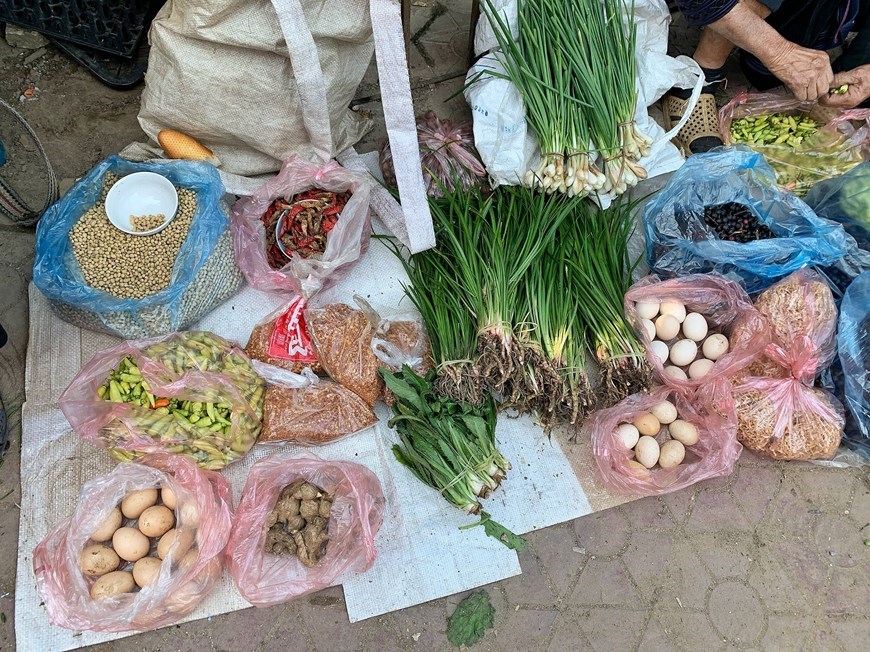
Some home-grown agricultural products Ha Nhi people sell at the market. Y Ty commune of Lao Cai province is famed among Vietnamese trekkers for its beautiful scenery at cloud level. It was once selected as one of the Best-kept Secrets in Asia Travel by the travel site www.thrillist.com. This website said: ‘Y Ty sits atop Vietnam’s highest plateau, offering spectacular views of cloud-reaching mountains and yellow rice patty fields. If you want to experience rural Vietnam without straying far from the tourist centre of Sa Pa, this is your spot.’ It noted that tourists should get to know locals at Y Ty’s market ‘where surrounding ethnic tribes sell traditional crafts and agricultural goods.’ (Photo: VietnamPlus)
-

A local ethnic minority woman cleans eggs for sale at the market. Once coming to Y Ty, tourists can visit rammed earth houses, which are a unique architectural identity of the Ha Nhi ethnic group in this commune. Only this type of houses can cope with the harsh climate conditions, cold and foggy, in this northern mountainous land. Lao Chai, Choan Then and Ban San villages are among the places where old rammed earth houses with thatch roofs still exist today. The walls made of earth have stood the test of time and fierce weather conditions and keep their owners warm in winter and cool in summer. (Photo: VietnamPlus)
-
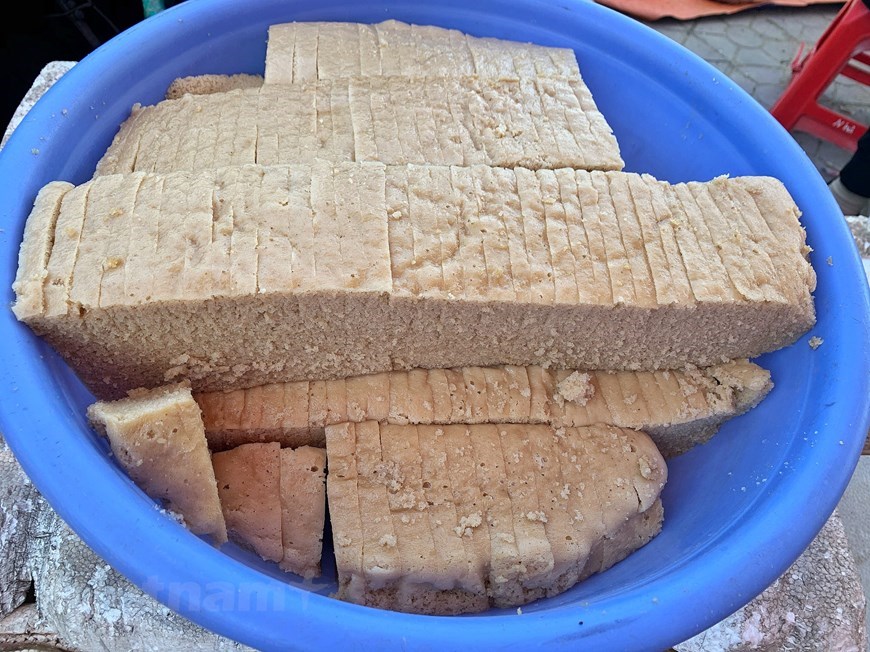
‘Banh bo’, a type of sweet, chewy sponge cake sold at this weekend market. Ha Nhi people live in rammed earth houses. These houses are called ‘nha trinh tuong’, with ‘nha’ being house and ‘tuong’ being wall. ‘Trinh’ is derived from the word ‘chinh’, which means ‘pounded until firm’ in the language of local ethnic minorities. The walls made of earth have stood the test of time and fierce weather conditions and keep their owners warm in winter and cool in summer. ‘Trinh tuong’ houses are popular in Vietnam’s northern region, and those of Ha Nhi people are square-shaped with their roofs tiled with thatch. (Photo: VietnamPlus)
-
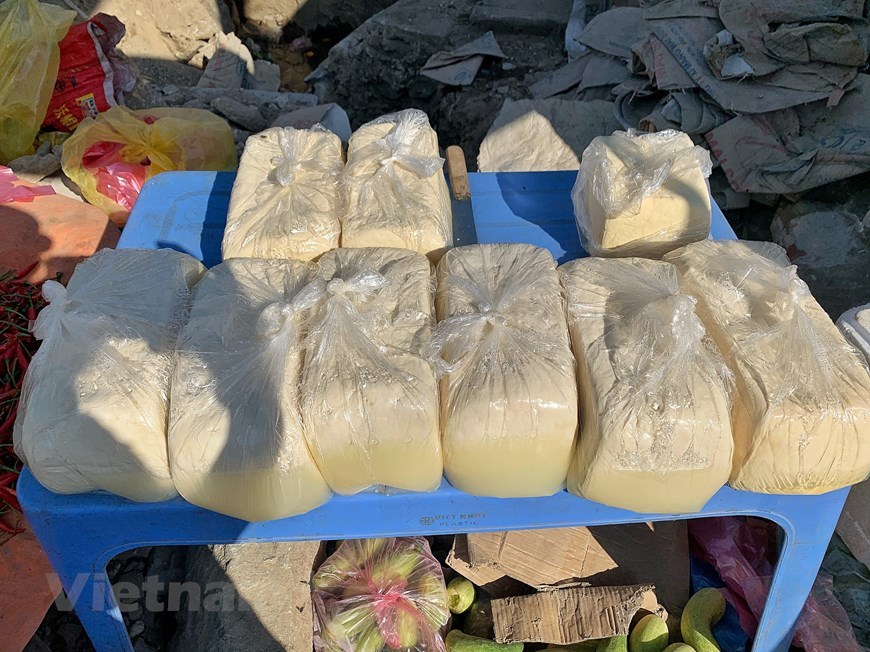
‘Giant’ blocks of tofu sold at the weekend market of Ha Nhi people in Y Ty commune. Ha Nhi people gather in villages with about 50 – 60 households each and farm wet rice, crops and livestock as the main livelihoods. Their rammed earth houses are similar to one another in terms of form, structure, space planning and decoration. Each often covers an area of 60 – 80 square metres, and the wall is 40 – 60 centimetres in thickness and 4 – 5 metres in height. The building of ‘trinh tuong’ houses starts at the end of the harvest season, from the eighth to the twelfth lunar month. (Photo: VietnamPlus)
-
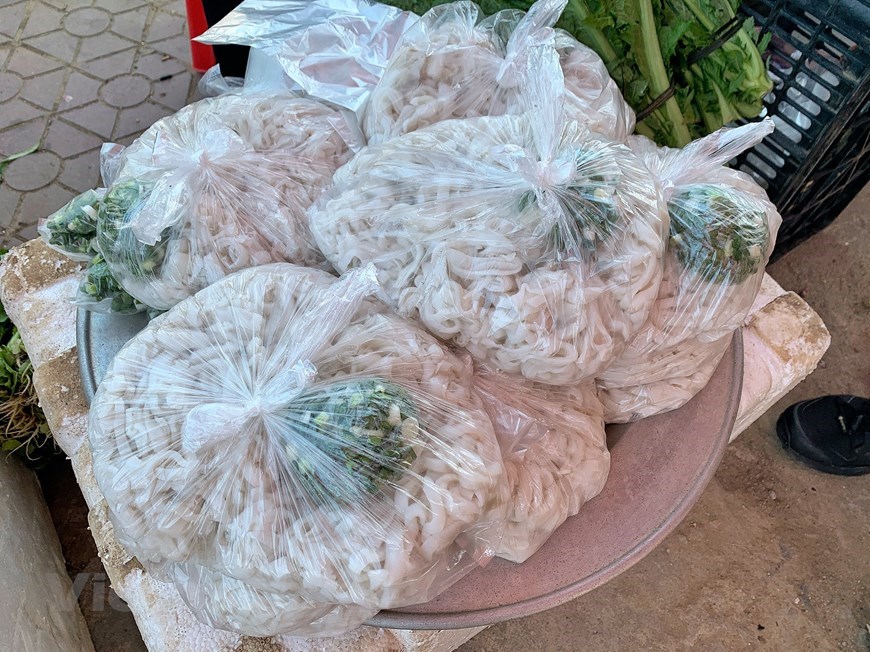
Noodle cut by hand is a favourite food of local ethnic people. Located in Bat Xat district of Lao Cai province, Y Ty is described as the beauty of a fairy who just woke up in the mountains and forests of the northwestern region. Visiting the commune in any season of the year, visitors can enjoy its attractive beauty. It is home to four ethnic groups, namely Ha Nhi, Mong, Dao and Giay. In particular, the Black Ha Nhi (a branch of the Ha Nhi ethnic group), who account for more than 70 percent of the population of the whole commune, still maintain their unique cultural identities. (Photo: VietnamPlus)
-
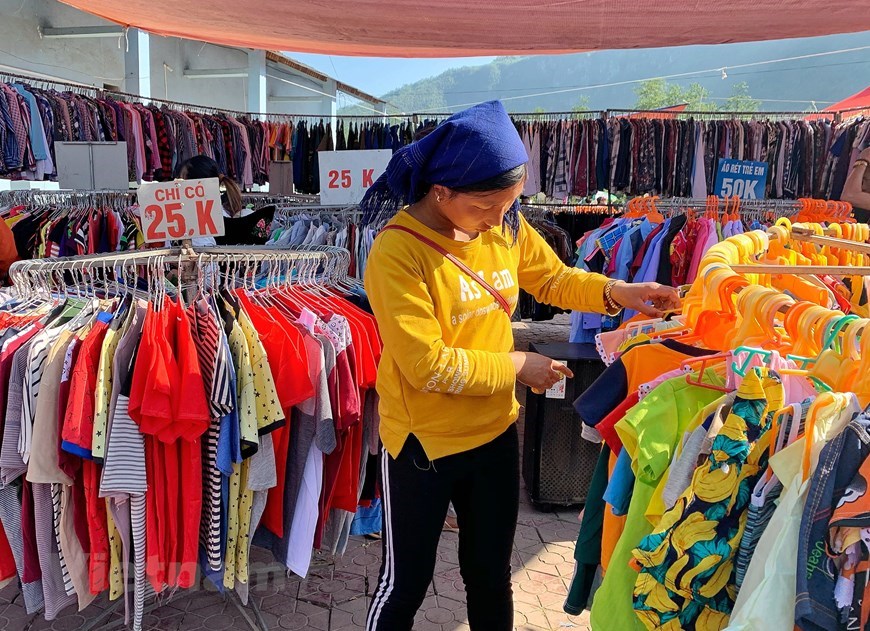
A ‘fashion shop’ at the weekend market. Y Ty, a paradise of white clouds, is a charming tourist destination of Ha Nhi people, which is one of the smallest ethnic groups in Vietnam. Visiting a Ha Nhi village, visitors will be surprised at ‘trinh tuong’ (rammed earth) houses of the ethnic minority. The houses feature earth walls about 4 – 5 metres high. The construction starts at the end of the crop season, from the eighth to the twelfth lunar month. Although all steps are done manually without cement, these houses are very solid and firm. They have small doors and windows to prevent cold fog, winds and rains from entering. (Photo: VietnamPlus)
-

Local children enjoy ice cream, a must-have snack for any children coming to the market. Ha Nhi is one of the 54 ethnic groups in Vietnam and, according to the 2009 population census, has a population of about 22,000. Most of this minority group’s population live in Lao Cai, Lai Chau and Dien Bien, three mountainous border provinces in the north of the country. They gather in villages with about 50 – 60 households each and farm wet rice, crops and livestock as the main livelihoods. Ha Nhi people live close to nature, which may be the reason why their costumes are mainly green, very close to the colour of the mountains and forests in northwestern Vietnam. (Photo: VietnamPlus)
-
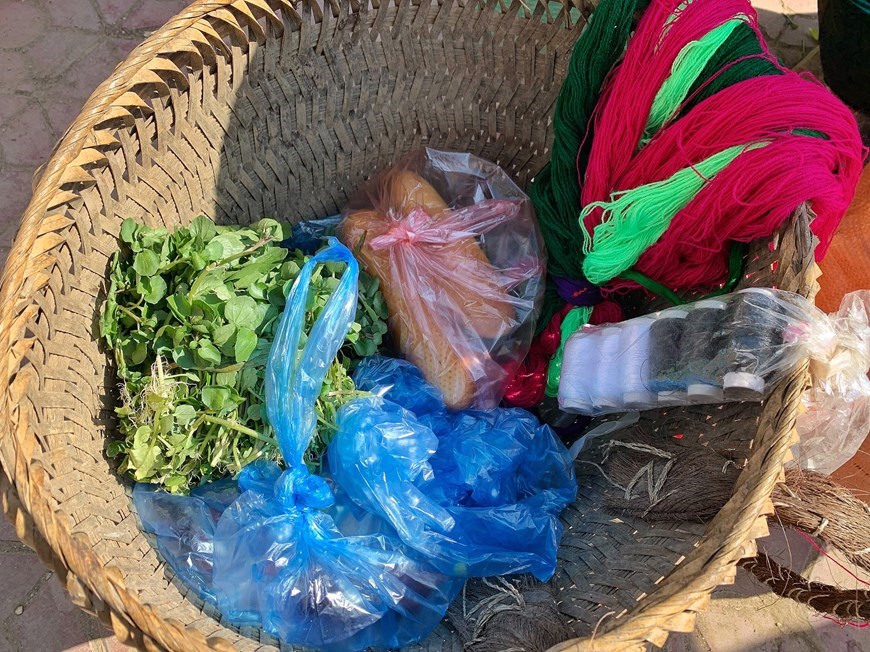
A back basket holding items that a local resident carries to the market. Ha Nhi people often reside in valleys below halfway up the mountain. In the Ha Nhi community, women are the breadwinners in families so they are in charge of farm work while men and the elderly often do the housework. The Ha Nhi language belongs to the Tibeto – Burmese language group. This ethnic group lives on rice cultivation of burnt-over land or terraced fields. They are one of the groups experienced in reclaiming terraced fields on mountain slopes, digging canals and building small dams. Their animal husbandry, weaving and basketry making are also developed. (Photo: VietnamPlus)
-
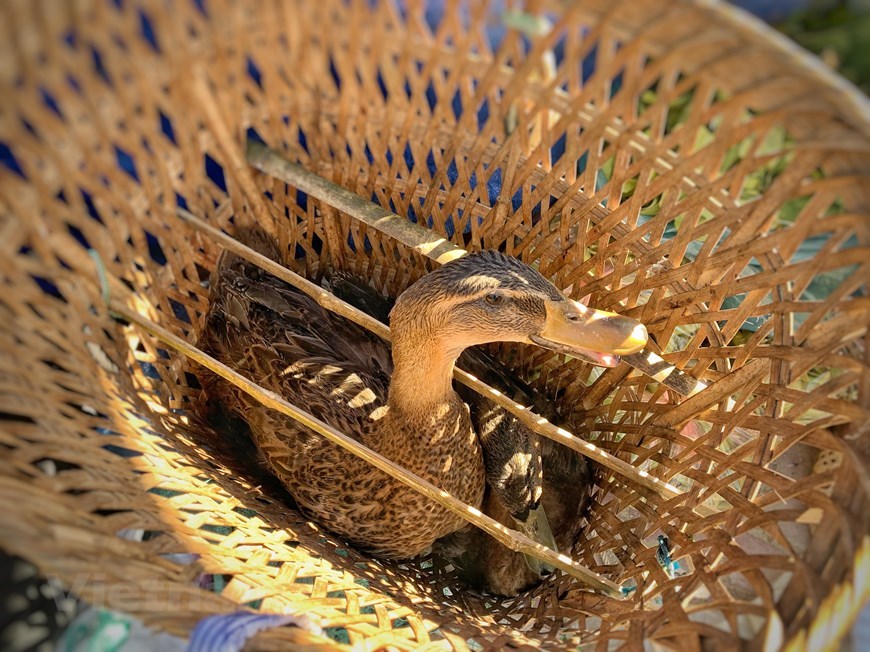
A pair of ducks brought to the market for sale. Y Ty is located near Sa Pa in the northwestern province of Lao Cai. At an altitude of 2,000 metres, the commune is several degrees cooler than Hanoi and sometimes experiences snow in winter. The road to Y Ty is picturesque adorned with forests, rice terraces and traditional villages among steep mountains. To have the best view of Y Ty’s cloud-covered region, it is recommended to travel from September to the following April during the dry season, with a possibility of snowing. The commune, which is 2,000 metres above sea level, is home to H’mong, Dao, Giay and Ha Nhi ethnic minority groups. (Photo: VietnamPlus)
-

An old woman soothes her crying grandchild. Aside from rammed earth houses and beautiful terraced paddy fields, communities in Y Ty commune also boast traditions of great significance. Among those traditions is the forest-worshipping ritual or ‘Ga Ma Do’ of the Ha Nhi people. This ritual is observed in the first lunar month to pray for peace, favourable weather, bountiful harvest, and prosperity. Each hamlet of Ha Nhi people has a sacred forest to worship the forest god who protects the village, and they believe that all trees and animals in the forest have their souls. With all of these identities, Y Ty is worthy of visiting for any tourist. (Photo: VietnamPlus)
-
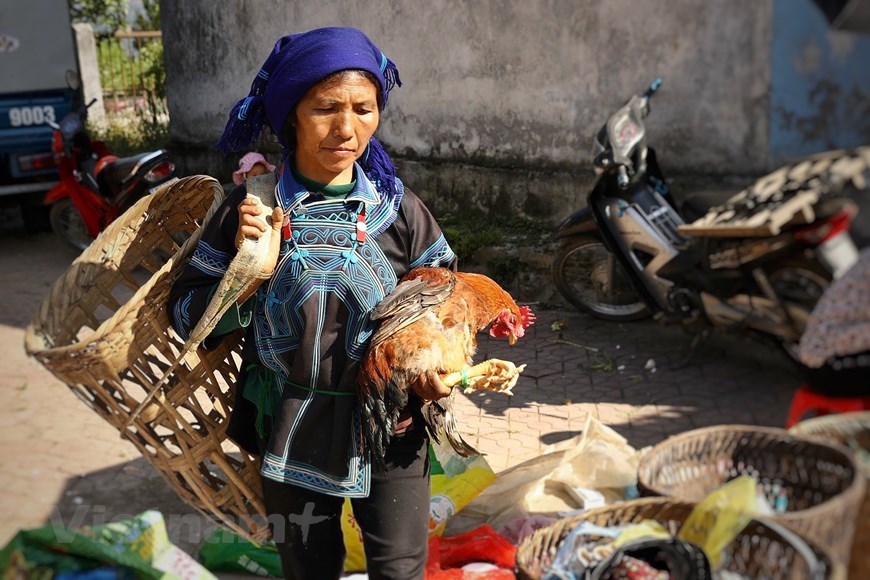
A woman returns home with a chicken she has just bought at the Y Ty market. Y Ty in Bat Xat district, about 70 km to the north of renowned resort town Sa Pa, is rather isolated due to high surrounding mountains. It is famed among Vietnamese trekkers for its beautiful scenery at cloud level. The commune, which is 2,000 metres above sea level, is home to H’mong, Dao, Giay and Ha Nhi ethnic minority groups. Y Ty is beautiful throughout the year though September and October are considered the best months to visit as the rice paddies will turn yellow dotted with houses with wooden roofs. (Photo: VietnamPlus)
-

Some items people prepare for the next market day. To have the best view of Y Ty’s cloud-covered region, it is recommended to travel from September to the following April during the dry season, with a possibility of snowing. In early April, tourists will also be welcomed by blooming rhododendron trees, covering the region with a pink-violet shade. In May and June when summer rains begin, water flows to the fields, softening dry soil to allow locals to begin planting rice. The brown soil, sparkling water, sun rays and green rice seedlings all create a wondrous picture for tourists. From late August to October, visitors can experience the blooming golden terraced rice fields. (Photo: VietnamPlus)
-
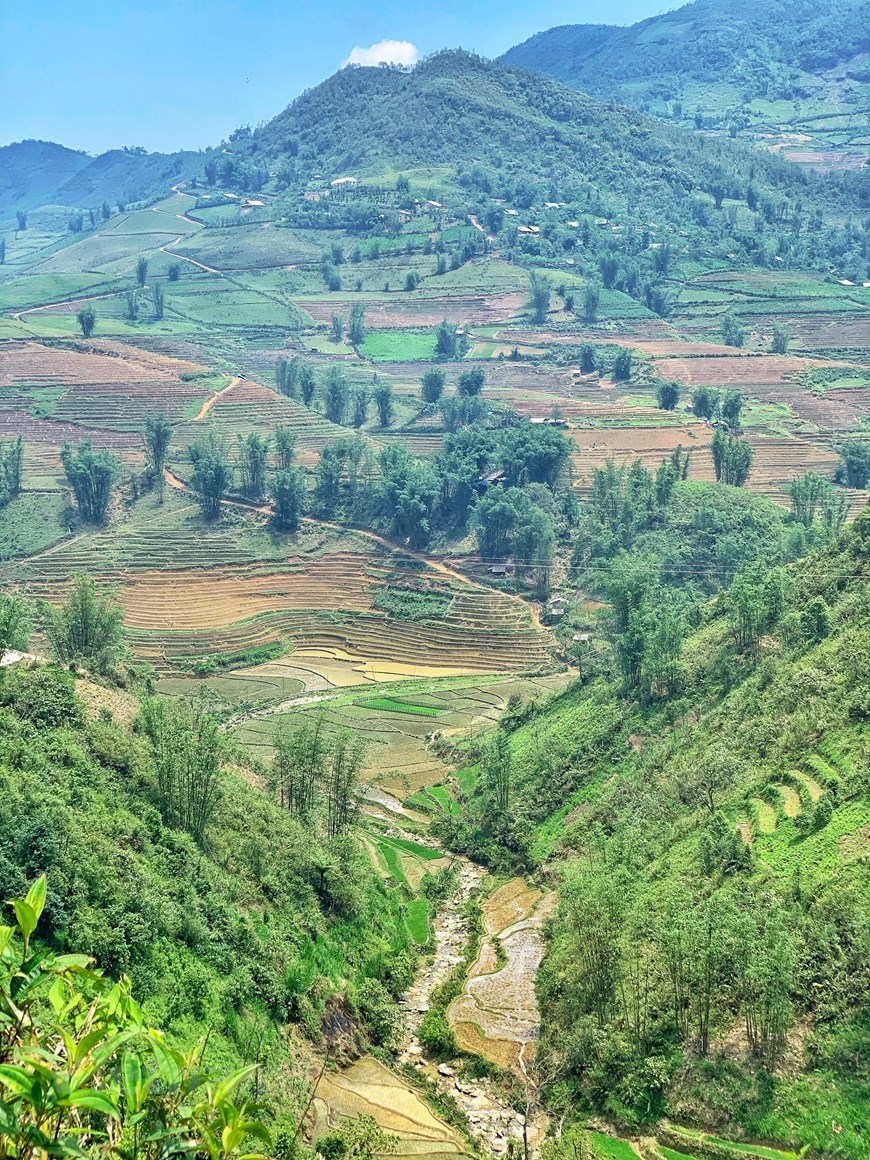
About 80 kilometres north of Lao Cai city, the commune is made up of mountainous terrain with steep slopes and a tough climate, with many streams that make it difficult for local residents to farm any grain variety. To adapt, local people created terraced paddy fields, with each generation expanding them, one on top of the other hugging mountains. At 2,000 metres above sea level and wrapped in mist and clouds, the terraced paddy fields impress visitors with a beautiful view of where sky meets earth. Y Ty is beautiful throughout the year though September and October are considered the best months to visit as the rice paddies will turn yellow dotted with houses with wooden roofs. (Photo: VietnamPlus)
A vivid market of Ha Nhi people in mountainous Y Ty commune
Gathering at the weekend market is a custom that Ha Nhi ethnic minority people in Y Ty commune of Bat Xat district, Lao Cai province, have upheld for generations. Most of the items on sale are handicrafts, vegetables, fruits, brocade, fabric, and poultry.

